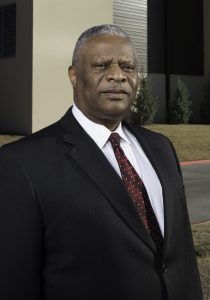Overnight delivery keeps supplies stocked
Inside the Baylor Scott & White Logistics Distribution Center
By Janna Zepp | Photography by Rusty Schramm, BSWH
Imagine being a healthcare system with a population about the size of the state of Virginia that requires constant supplying and re-supplying of hospitals and clinics that carry only four days of inventory.
 That was the challenge presented when the Baylor Health Care System and Scott & White Healthcare announced their merger in 2013. That merger created a need for a better way to get supplies to the hospitals, practices, and clinics under the Baylor Scott & White Health banner, and soon after, a supply chain organization with a physical location in Temple was created so that all procurement, strategic sourcing, project management and facility operations could meet demand and create better experiences for patients and staff.
That was the challenge presented when the Baylor Health Care System and Scott & White Healthcare announced their merger in 2013. That merger created a need for a better way to get supplies to the hospitals, practices, and clinics under the Baylor Scott & White Health banner, and soon after, a supply chain organization with a physical location in Temple was created so that all procurement, strategic sourcing, project management and facility operations could meet demand and create better experiences for patients and staff.
Since 2016, the Baylor Scott & White Health Service Company has operated a 100,000-square-foot logistics and distribution center that sits on the east side of I-35 in Temple and distributes over $20 million in medical supplies each month. The center holds about 30 days of inventory and operates 24 hours a day. Orders are placed online with a cutoff time of 4 p.m. so that they may be fulfilled in time to arrive at their destinations by the next morning. Orders ship out just after midnight each night in 15 semi-trailer trucks to 26 hospital sites and 700 clinics and practices as far north at McKinney, as far south as Buda, as far east as College Station and Brenham, and as far west as Llano. Courier services that are integrated into the distribution network at major geographic hubs go even farther.
Baylor Scott & White Health’s Senior Vice President and Chief Supply Chain Officer Tony Johnson says streamlining processes has made a difference in overhead and meeting demand in a more efficient and cost-effective way that saves medical staff time and patients money.
“We have to think like a system rather than a hospital in everything we do,” he says. “Before we could optimize the distribution center, we had to optimize the entire supply chain. We had to focus on contracts that cover all Baylor Scott & White entities with best in market pricing. After achieving this, we began distributing these products through our distribution center.”
Johnson says that the distribution center coupled with the strategic sourcing component of the supply chain resulted in a reduction of $64 million in operational expenses for fiscal year 2020 which ended June 30. He credits the success of the distribution center to the employee talent recruited from the automotive industry, grocery companies such as Kroger and H-E-B, distribution companies such as Amazon, and even oil field employees with supply chain and logistics experience.
More than benefiting BSWH medical staff and patients, Baylor Scott & White Health has created jobs for Central Texans and they did it with the help of one Central Texan in particular. Johnson says Drayton McLane Jr. of the McLane Group helped BSWH tremendously.
“Mr. McLane contributed his great insight and experience and they proved invaluable as we built a world class supply chain and the BSWH distribution center. He is a huge supporter and resource for us,” Johnson says.
 The distribution center and the supply chain system more than proved their usefulness during the COVID-19 pandemic. Every situation was planned for with regard to disaster preparedness and even during times of highest demand, BSWH hospitals and clinics got what they needed when they needed it.
The distribution center and the supply chain system more than proved their usefulness during the COVID-19 pandemic. Every situation was planned for with regard to disaster preparedness and even during times of highest demand, BSWH hospitals and clinics got what they needed when they needed it.
Baylor Scott & White Health’s integrated supply chain with its end-to-end logistics and transportation network is something most healthcare systems in the nation do not have. BSWH’s supply chain is a stellar and high performing supply chain and a model for healthcare systems of the future.
“I can think of fewer than 10 healthcare organizations that have anything remotely close to the capabilities we have in this distribution center,” Johnson says. “We approached this as an enterprise solution rather than a hospital enhancement and it has worked well for everyone.”




